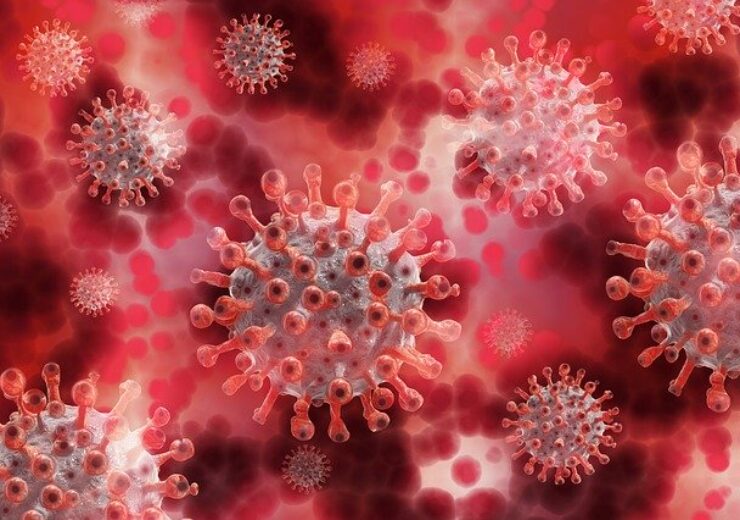EPA and the Centers for Disease Control and Prevention (CDC) recognize that certain microorganisms can be ranked with respect to their tolerance to chemical disinfectants

COVID-19 is caused by SARS-CoV-2 virus. (Credit: Gerd Altmann from Pixabay.)
PCT is pleased to announce that it has received approval for “emerging pathogens” labeling with the US EPA.
The application was filed under the guidance document “Guidance to Registrants: Process for Making Claims Against Emerging Viral Pathogens Not on EPA-Registered Disinfectant Labels.” It was approved on March 26th, 2020. The guidance document provides the following information regarding different classes of viruses and their resistance to being killed by disinfectants:
EPA and the Centers for Disease Control and Prevention (CDC) recognize that certain microorganisms can be ranked with respect to their tolerance to chemical disinfectants. The Spaulding Classification model, used by CDC, tiers microorganisms in accordance with the level of resistance to being killed (inactivation) by typical disinfectant products. With this approach viruses are divided into three viral subgroups (small non-enveloped, large non-enveloped, and enveloped) based on their relative resistance to inactivation … According to this hierarchy, if an antimicrobial product can kill a small, non-enveloped virus it should be able to kill any large, non-enveloped virus or any enveloped virus. Similarly, a product that can kill a large, non-enveloped virus should be able to kill any enveloped virus.
Small, Non-Enveloped Viruses (<50 nm): These small, non-enveloped viruses can be highly resistant to inactivation by disinfection. Despite the lack of a lipid envelope, these organisms have a very resistant protein capsid…
Large, Non-Enveloped Viruses: Compared to small, non-enveloped viruses, these viruses are less resistant to inactivation by disinfection. Although they have a resistant protein capsid, their larger size (50-100nm) makes them more vulnerable than their smaller viral counterparts…
Enveloped Viruses: Enveloped viruses are the least resistant to inactivation by disinfection. The structure of these viruses includes a lipid envelope, which is easily compromised by most disinfectants. Once the lipid envelope is damaged, the integrity of the virus is compromised, thereby neutralizing its infectivity.
In addition to being “an EPA-registered, hospital/healthcare or broad-spectrum disinfectant …”, in order to meet product eligibility criteria, the product “should have disinfectant efficacy claims against at least one of the following viral pathogen groupings:
a) A product should be approved by EPA to inactivate at least one large or one small non-enveloped virus to be eligible for use against an enveloped emerging viral pathogen.
b) A product should be approved by EPA to inactivate at least one small, non-enveloped virus to be eligible for use against a large, non-enveloped emerging viral pathogen.
c) A product should be approved by EPA to inactivate at least two small, non-enveloped viruses with each from a different viral family to be eligible for use against a small, non-enveloped emerging viral pathogen.
This approach, where disinfectant products registered for use against viral pathogens in one category of the Spaulding Classification model can be presumed effective against viral pathogens in less-resistant categories, is intended to serve as a conservative approach to identifying disinfectant products likely to be effective against emerging pathogens.”
As a result of meeting all of the Product Eligibility Criteria, PCT LTD can now make the following statement “only through the following communication outlets: … “1-800” consumer information services, social media sites and company websites (non-label related) … [as well as] technical literature distributed exclusively to health care facilities, physicians, nurses and public health officials”:
Hydrolyte has demonstrated effectiveness against viruses similar to SARS-CoV-2 virus on hard, non-porous surfaces. Therefore, Hydrolyte can be used against SARS-CoV-2 virus when used in accordance with the directions for use against Norovirus and Rhinovirus type 16 on hard, non-porous surfaces.
COVID-19 is caused by SARS-CoV-2 virus. Hydrolyte kills similar viruses and therefore can be used against SARS-CoV-2 virus when used in accordance with the directions for use against Norovirus and Rhinovirus type 16 on hard, non-porous surfaces.
“We are very pleased to receive approval for an “emerging pathogens” claim on our product label,” says CEO Gary Grieco. “It represents an important step for us as a business and in helping to control the spread of infectious disease as a whole. Additionally, we are now prequalified for future emerging pathogens of any virus classification.”
Due to the ongoing coronavirus pandemic, PCT LTD has seen an increased number of inquiries from existing clients, sub-registrants, and distributors; in addition to new and prospective customers. The company recently announced that they had temporarily shifted their focus towards producing mass quantities of disinfecting fluids to meet growing demand.
“Fluid sales have been tremendous for us,” says PCT Ltd CEO Gary Grieco. “To put it simply, we are routinely shipping fluids out at rapid pace and into the hands of trained professionals where our product can be put to good use fighting the spread of infectious disease in our communities. We are limited only by our capacity to produce the fluids, but we expect to double our production capacity by April 1st.”
Source: Company Press Release
